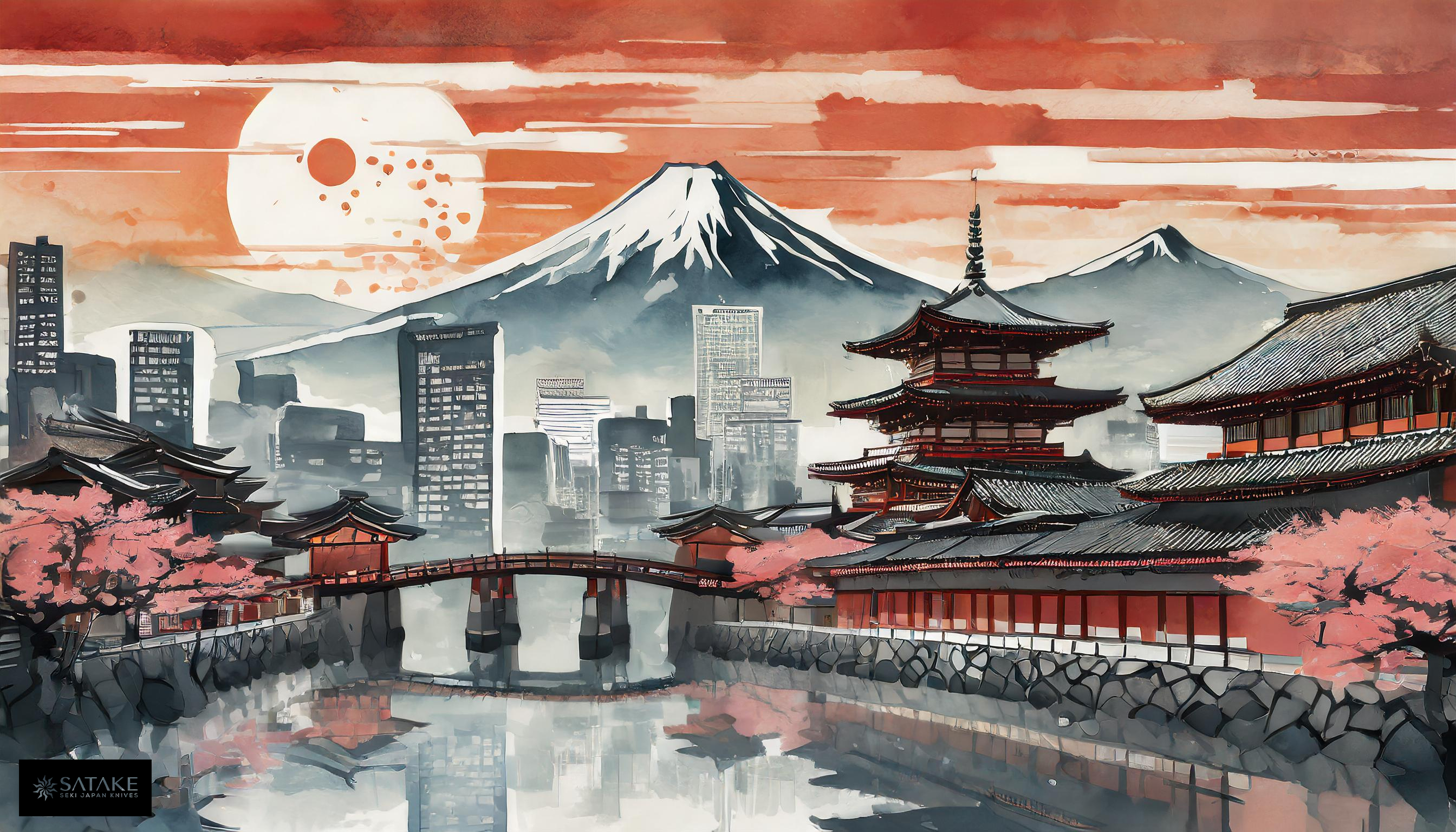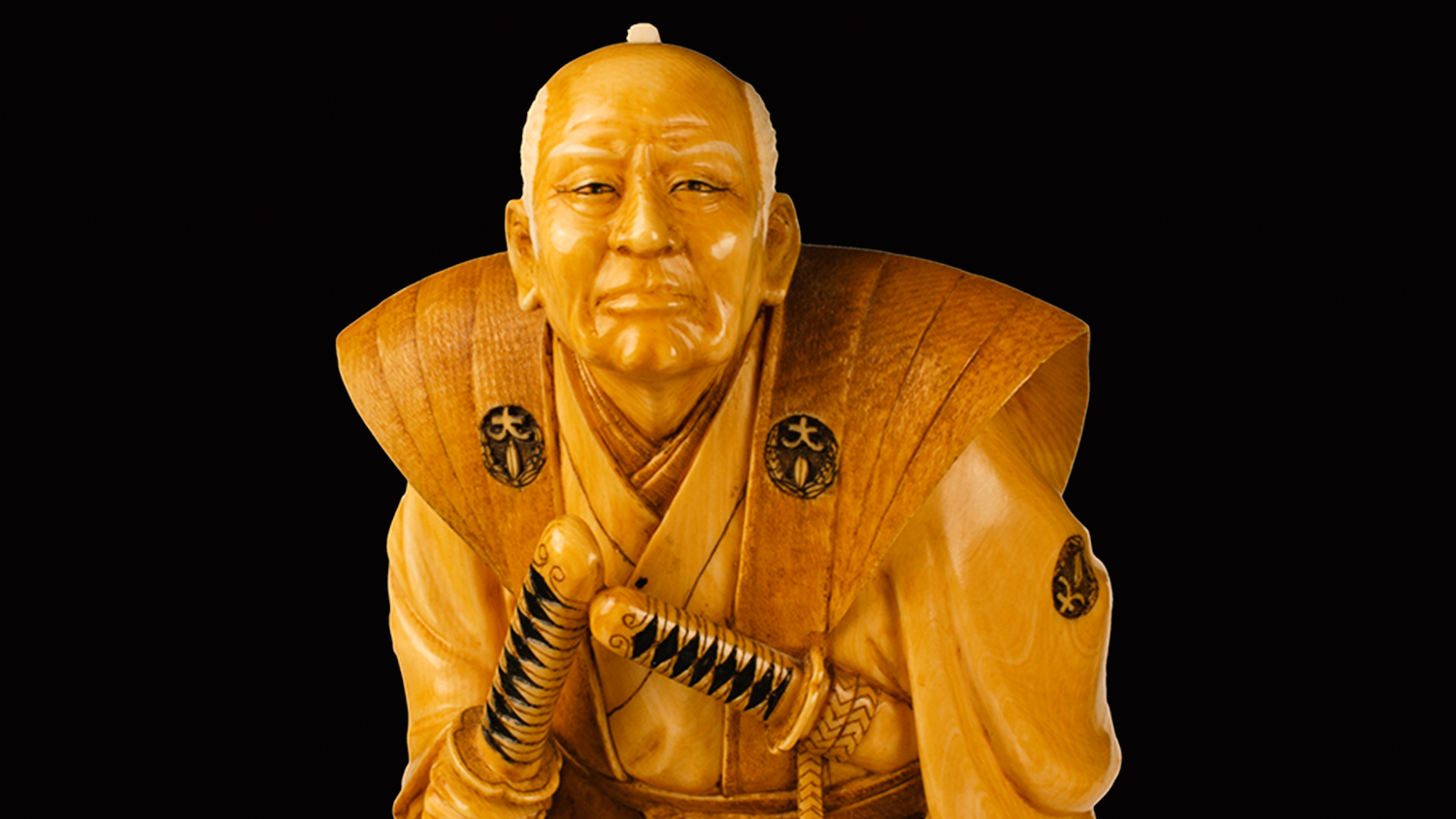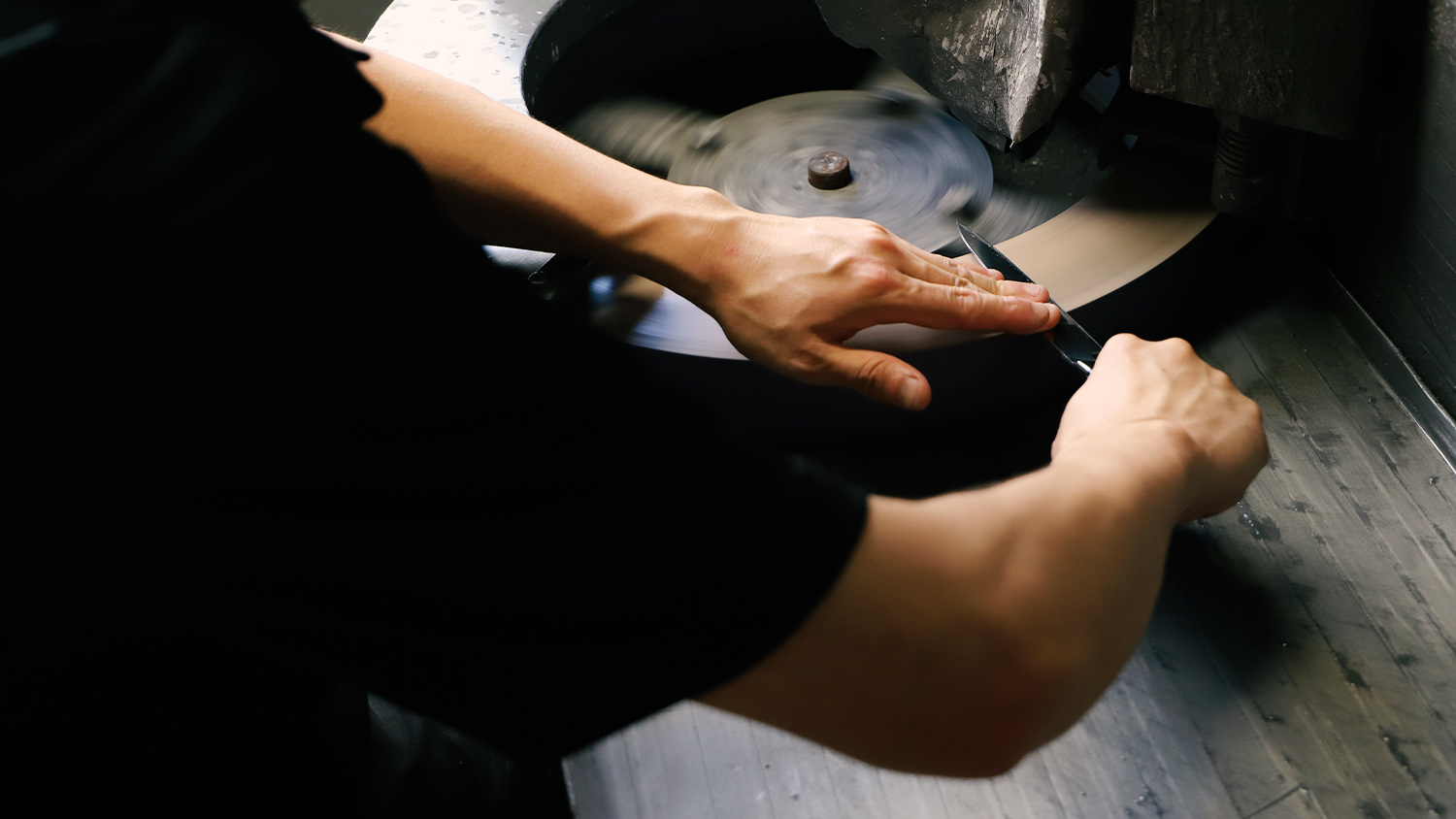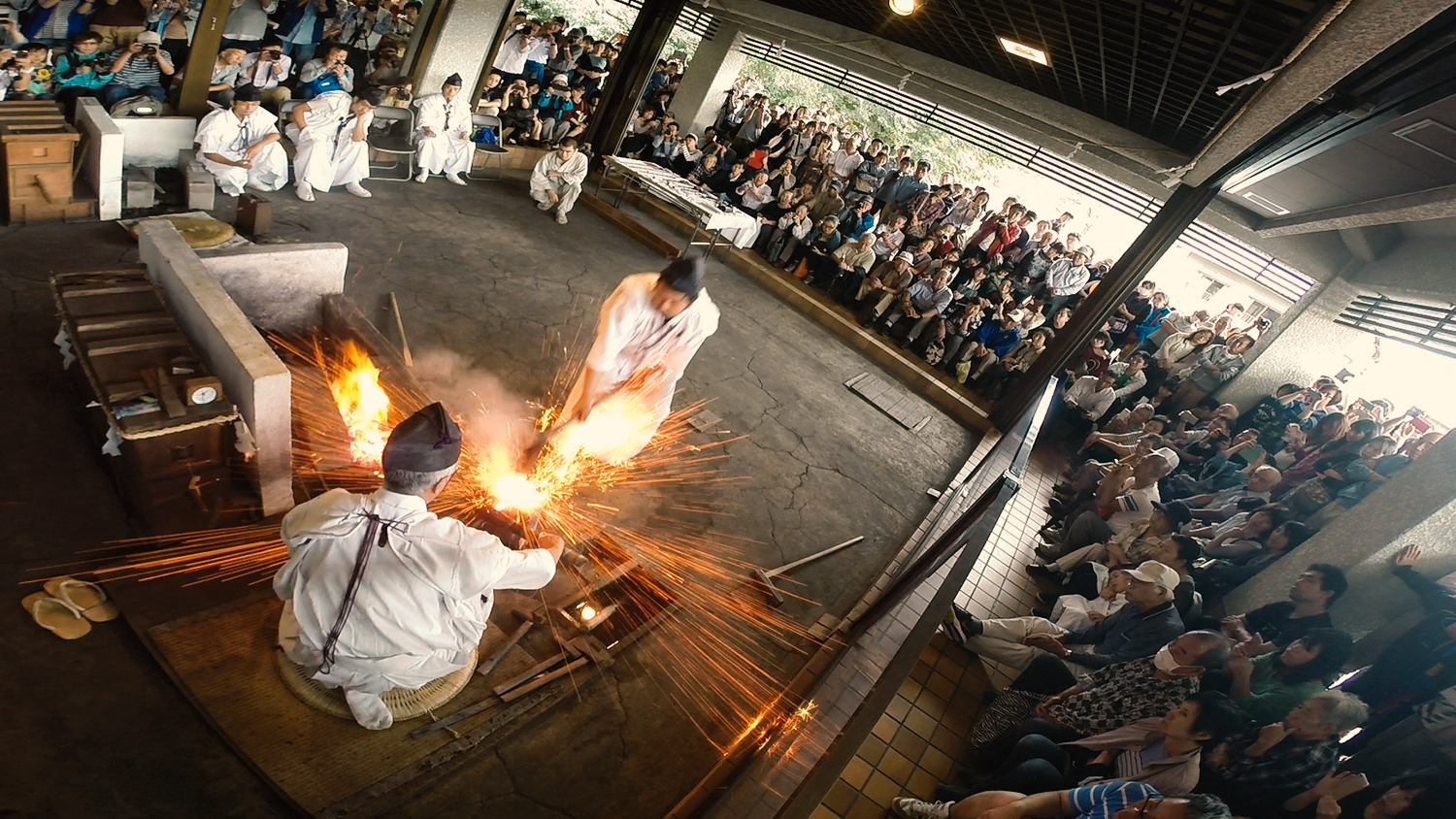Seki City: The Cradle of Japanese Knifemaking – Samurai, Myths, and the Eternal Hearth of the Satake

Seki City, located in Gifu Prefecture, Japan, is renowned for its knife-making industry, boasting a tradition of over 700 years. The city is home to numerous knife-making workshops and shops where visitors can discover the art of knife crafting and purchase high-quality knives.
Seki City: The Legendary Cradle of Japanese Knife Manufacturing
Imagine feeling the winds of history sweeping through your kitchen like a blade, as you chop ingredients with a perfectly sharp Satake kitchen knife. In Japan, there's a place where culinary magic intertwines with the memory of bloody historical battles: Seki City. This small town, nestled in Gifu Prefecture, has preserved the sacred fire of Japanese blade manufacturing and, later, the knife industry for no less than 700 years. But why did this unique craft take root and flourish specifically here, and what role did a deeply rooted family like the Satake play in it? In our article, we'll delve into the stormy depths of Seki's history, from the legends of the samurai right up to today's modern kitchen knives! Get ready, because this is more than a story about steel – it's an epic of perseverance, knowledge, and art!

The Beginnings: When Iron Came to Life in the Embrace of Rivers
Seki's magical story begins in the 13th century when the legendary smith, Motoshige—considered the founding smith of Mino Province—relocated here from Kyoto. The answer to why is simple yet brilliant, as if nature itself created this place specifically for forging a samurai sword:
- The Water of Life: The crystal-clear, cold waters of the Nagaragawa and Tsugagawa rivers were ideal for cooling forged steel. Think about it: after heating the blade, rapid and even cooling (quenching) is essential to achieve the right hardness and toughness. Furthermore, the rivers also provided energy to power bellows and other tools.
- The Earth's Gift: The nearby mountains offered an abundance of high-quality sandstone, perfect for creating fine sharpening stones. The best abrasive material was indispensable for sharpening swords. In addition, the area was rich in charcoal, ensuring the continuous fueling of the burning furnaces.
- The Breath of Commerce: The rivers were also strategically crucial. They made it easy to transport heavy raw materials to the workshops, and, more importantly, the finished, sharp blades could reach every corner of Japan.
These ideal conditions acted as a magnet, drawing smiths, and Seki soon became the cradle of the Minokami School, which grew into one of the most influential branches of Japanese sword making. Here, amidst the glowing fires of the forges and the rhythmic clang of hammers, were born the katana and wakizashi blades that were not merely deadly weapons but living extensions of the samurai's soul.

The Age of Samurai: When the Blade Forged Honor
The Muromachi period (1336-1573) – better known as the "Age of Warring States" or Sengoku Jidai – was a bloody but unforgettable era in Japanese history. Due to constant wars and clan conflicts, the demand for swords was as immense as the need for bread. Seki's smiths capitalized on this golden age, churning out tens of thousands of swords annually, like a dragon's breath into iron. Seki swords were legendary for their exceptional sharpness, incredible durability, and beautiful craftsmanship.

Just think of Oda Nobunaga, the "Great Unifier," or the "One-Eyed Dragon," Date Masamune, or even Takeda Shingen, known as the "Tiger." The lives of these legendary samurai warlords and countless of their warriors depended on a reliable blade. A poorly made sword could mean death. Seki's masters not only knew the secrets of working iron but also perfected the art of combining different steel layers, creating an astonishing variety of Damascus-patterned blades that rivaled the properties of the most modern steels. The smiths crafted blades that symbolized the heroic deeds of warriors and the samurai code – Bushido. A well-made Seki katana was the ultimate guarantee on the battlefield, and the smiths who created these works of art enjoyed the highest respect in society, passing their secrets down from father to son, generation after generation.
The Satake Family: Guardians of the Flame of Tradition in Seki
Throughout Seki's history, numerous forging dynasties and families played a key role in the city's prosperity. The Satake family is one such prominent player. Although the Satake name is now most closely associated with modern Japanese kitchen knives, their roots extend deep into the centuries-old traditions of Seki's smiths. They, too, were part of the continuous development and innovation that made Seki one of the world's leading blade manufacturing centers.

The Satake is not a museum piece, but a living, breathing entity that built its brand name upon traditional Japanese craftsmanship, adapting to the demands of the modern era. Recognizing the changing times, the family shifted its focus from swords to tools for everyday life, preserving the ancient principles of blade making: precision, steel knowledge, and the pursuit of perfection. Thus, it became one of the most recognized manufacturers of quality kitchen knives. Therefore, Satake is not just a brand, but a living connection between past and present, a bridge between the swords of the samurai and today's kitchens.

The Modern Era: The Soul of the Katana in the Kitchen Knife's Edge
With the advent of the Tokugawa period (1603-1868), Japan enjoyed relative peace, and the role of the samurai gradually changed. The demand for swords drastically declined, and Seki's smiths had to face a new reality. But the artisanal spirit did not die! Thanks to their creativity and centuries of knowledge, blade manufacturing found new paths:
- The Art of Transformation: Smiths began applying their unparalleled knowledge of blade making to other, everyday tools. Scissors, razors, artisan tools, and agricultural implements were born from their hands, each bearing the hallmarks of Seki quality.
- The Kitchen Knife Revolution: In the 20th century, especially after World War II, Japanese kitchen knives exploded in popularity worldwide. Seki became the absolute center of Japanese kitchen knife manufacturing. The precision acquired during sword making, the knowledge of steel, and the sophisticated heat treatment techniques all contributed to Seki-made kitchen knives standing out from the competition.
Today, Seki City is synonymous with Japanese knife manufacturing. It is home to numerous world-renowned knife companies that combine traditional techniques with the most modern technologies and materials. This is where exquisite MVS10Cob Damascus steel blades are made, true works of art, as are reliable everyday kitchen knives made from AUS-8A or U420J2 steel, which Satake also favors. Satake kitchen knives still faithfully reflect the centuries of knowledge of Seki's masters, their commitment to quality, and their desire for continuous innovation.
Seki Today: The Living Flame of History and the Blade of the Future
Seki City remains a vibrant, living center of the Japanese knife industry today. The city houses the impressive Seki Hamono Museum, which not only showcases the history of sword making but also provides insight into modern knife manufacturing technologies, serving as a bridge between the past and present. Every October, the spectacular Seki Hamono Matsuri (Knife Festival) is held, where visitors can watch traditional forging demonstrations live, admire every phase of blade production, and, of course, purchase the latest, razor-sharp creations.

The history of Seki is an epic of perseverance, adaptability, and an unyielding pursuit of excellence. From the formidable master sword-smiths of the samurai era to modern kitchen knife manufacturers, the city has continuously managed to reinvent itself while remaining true to its ancient roots. When you hold a Satake knife today, you're not just holding a kitchen tool; you're holding 700 years of tradition, a piece of a city's history, and the soul of the smiths who lived there. This blade doesn't just cut—it tells a story—a story of samurai, of resilience, and of a city where the meeting of fire and steel became art.

